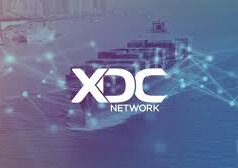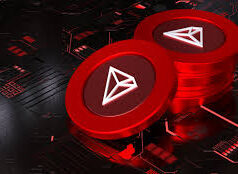When most people hear “blockchain,” their minds jump straight to Bitcoin, Ethereum, or the latest meme coin making waves on X. It’s easy to see why—cryptocurrency put blockchain on the map. But is blockchain only used for crypto? Far from it. This revolutionary technology, often described as a decentralized digital ledger, is reshaping industries far beyond finance. From supply chains to healthcare, voting systems to digital art, blockchain’s applications are as diverse as they are transformative. Let’s dive into what blockchain is, how it powers crypto, and the many ways it’s changing the world in 2025.
What Is Blockchain, Anyway?
At its core, blockchain is a secure, transparent way to record data across a network of computers. Each “block” contains a batch of transactions, linked to the previous one in a “chain,” creating an immutable record. No single entity controls it, and changes require consensus from the network, making it tamper-resistant. Crypto relies on this for secure, trustless transactions—Bitcoin’s blockchain, for example, ensures no one can double-spend coins or manipulate the ledger.
But blockchain’s magic lies in its versatility. Its ability to ensure transparency, security, and decentralization makes it a game-changer for any industry needing trust without intermediaries. As @TechBitcoiner noted on X, “Blockchain is like the internet in the ’90s—people thought it was just for email, but it’s rewiring everything.” Let’s explore how.
Cryptocurrency: Blockchain’s First Star
There’s no denying crypto is blockchain’s flagship use case. Bitcoin, launched in 2009, introduced the world to decentralized finance, enabling peer-to-peer transactions without banks. Ethereum took it further with smart contracts—self-executing agreements coded on the blockchain—powering decentralized apps (dApps) and tokens. In 2025, crypto markets are booming, with Bitcoin hovering around $98,000 and Ethereum at $2,600, per CoinMarketCap. Stablecoins, like those backed by the recent GENIUS Act, are also gaining traction for everyday payments.
Crypto’s success stems from blockchain’s ability to provide security and transparency. Every transaction is recorded publicly, verifiable by anyone, yet encrypted to protect privacy. This trustless system has fueled a $2.5 trillion market, as CoinDesk reports, but it’s just the tip of the iceberg.
Beyond Crypto: Blockchain’s Diverse Applications
Blockchain’s potential extends far beyond digital coins. Here are some of the most exciting ways it’s being used in 2025:
1. Supply Chain Transparency
Ever wonder where your coffee beans come from? Blockchain ensures you know. Companies like IBM and Walmart use blockchain to track goods from source to shelf, ensuring authenticity and ethical practices. IBM’s Food Trust platform, for instance, logs every step of a product’s journey, reducing fraud and ensuring food safety. A 2025 Deloitte report notes that 55% of global retailers now use blockchain for supply chain management, cutting costs and boosting consumer trust. If your avocado’s label says “organic,” blockchain can prove it.
2. Healthcare Data Security
Healthcare is a prime candidate for blockchain’s secure data-sharing capabilities. Patient records, often scattered across hospitals, are vulnerable to breaches. Blockchain platforms like MedRec and Health Nexus store encrypted records, giving patients control over who accesses their data. In 2025, the U.S. Department of Health, as reported by Forbes, is piloting blockchain-based systems to streamline clinical trial data, ensuring transparency while protecting privacy. This could revolutionize how medical data is shared and secured.
3. Voting Systems
Election integrity is a hot topic, and blockchain offers a solution. By recording votes on a transparent, tamper-proof ledger, blockchain can prevent fraud and ensure accurate counts. In 2024, Sierra Leone piloted blockchain-based voting, and by 2025, countries like Estonia are expanding its use for local elections, per Cointelegraph. These systems allow voters to verify their ballots while maintaining anonymity, potentially restoring trust in democratic processes.
4. Digital Identity
Identity theft and data breaches are rampant, but blockchain-based digital IDs could change that. Platforms like SelfKey and uPort let users control their identity data, sharing only what’s needed for specific transactions—like proving you’re over 21 without revealing your full name. Microsoft’s 2025 partnership with DID (Decentralized Identity) protocols, as noted by TechCrunch, is rolling out blockchain IDs for secure logins across its services, cutting reliance on vulnerable centralized databases.
5. NFTs and Digital Ownership
Non-fungible tokens (NFTs), built on blockchains like Ethereum, prove ownership of digital assets like art, music, or virtual real estate. While the 2021 NFT craze has cooled, 2025 sees NFTs evolving for practical uses. Musicians use platforms like Audius to sell tokenized songs directly to fans, bypassing record labels. Gaming platforms like Decentraland use NFTs for in-game assets, creating verifiable digital economies. As @NFT_Insider posted on X, “NFTs aren’t just JPEGs—they’re rewriting ownership rules.”
6. Real Estate and Tokenization
Buying property is often slow and paperwork-heavy, but blockchain streamlines it. Tokenizing real estate—dividing property into digital shares on a blockchain—makes investing more accessible. Platforms like RealT let users buy fractional shares of rental properties for as little as $50. A 2025 CB Insights report estimates tokenized real estate could reach a $1.4 trillion market by 2030, democratizing access to wealth-building assets.
7. Carbon Credit Tracking
As climate concerns grow, blockchain is tackling carbon markets. Platforms like Veridium track carbon credits on a transparent ledger, ensuring companies can’t double-count offsets or greenwash their efforts. In 2025, the EU’s carbon trading system is integrating blockchain to enhance accountability, per Reuters, aligning with global net-zero goals.
Challenges and Limitations
Blockchain isn’t a cure-all. Scalability remains an issue—Bitcoin’s blockchain processes just 7 transactions per second compared to Visa’s 24,000. Energy consumption is another concern, though Ethereum’s 2022 shift to proof-of-stake slashed its carbon footprint by 99%, per Cointelegraph. Regulatory uncertainty also looms, as governments grapple with how to oversee decentralized systems. And while blockchain is secure, human error—like losing private keys—can lead to irreversible losses.
Why Blockchain’s Future Is Bright
Despite challenges, blockchain’s applications are expanding rapidly. Its ability to cut intermediaries, enhance transparency, and secure data makes it a cornerstone of the digital age. A 2025 PwC survey found 77% of executives believe blockchain will transform their industries within five years. From enabling microtransactions in developing nations to powering decentralized social platforms (like those discussed on X by @Web3_Visionary), blockchain is redefining trust in a connected world.
Final Thoughts
Is blockchain only used for cryptocurrency? Absolutely not. While crypto remains its most famous application, blockchain’s decentralized, secure framework is revolutionizing supply chains, healthcare, voting, identity, and more. In 2025, as adoption accelerates, it’s clear blockchain is more than a buzzword—it’s a tool reshaping how we interact, trade, and trust. Whether you’re tracking your groceries’ origins or securing your digital identity, blockchain is quietly powering the future. Stay curious, explore its potential, and don’t be surprised when it pops up in unexpected places
Sources:
- CoinDesk:
- Cointelegraph:
- Forbes:
- TechCrunch:
- Reuters:
- Deloitte:
- CB Insights:
- PwC:
- CoinMarketCap:
- X Posts: @TechBitcoiner, @NFT_Insider, @Web3_Visionary




























The examples of tokenizing real-world assets and smart contracts for DeFi really show how blockchain is reshaping industries. Can’t wait to see more real-world use cases unfold
Excellent article highlighting blockchain’s versatility! It’s fascinating to see its applications beyond crypto, like in supply chain transparency and healthcare data security.
such an insightful read! I’ve always associated blockchain with Bitcoin, but your explanation of smart contracts and their use in automating processes blew my mind.
I had no idea blockchain could be used for supply chain management or healthcare records
Thanks for breaking down blockchain’s broader applications. The part about tokenizing real estate was super interesting—fractional ownership could be a game-changer for small investors like me.
Most in the crypto space do not know this trust me.